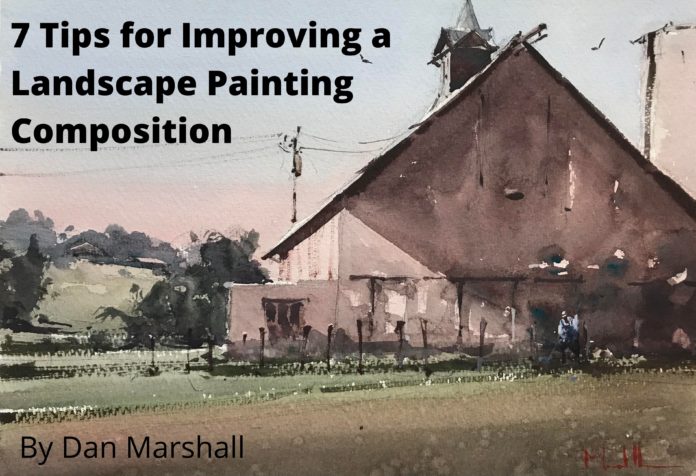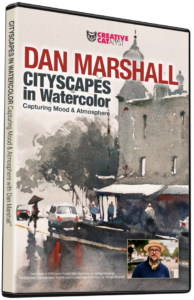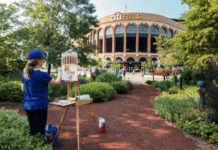In this free article, score Dan Marshall’s tips, plus three case studies on landscape painting composition.
By Dan Marshall
(Featured in the PaintTube.TV workshops, “Cityscapes in Watercolor” and “Effortless Watercolors”)
- Don’t feel like you have to duplicate everything in front of you — that’s a camera’s job.
- Remove unnecessary objects in over-crowded compositions.
- Leave out any object that doesn’t support the overall design of your painting.
- Add points of detail, figures, or directional cues to compositions that appear too empty or boring. It doesn’t matter if they’re not present in real life; they just need to make sense and be placed with purpose.
- Bend reality and reorganize objects to send the clearest, strongest message of your painting.
- Do thumbnail sketches and learn to pre-visualize your finished painting.
- Sketch regularly to build up your visual library so you can draw from experience and add elements to your painting, even when they’re not directly in front of you.
Related Article: Step-by-Step: Edit the Landscape for Better Composition
3 Landscape Painting Composition Case Studies
1. Sedalia Shadows
I knew this lovely old barn would make a great subject, but a maze of cattle pens cluttered up the foreground. Eliminating the pens simplified the space and created a more inviting path for the viewer’s eye to travel into the scene. I then used shadows and the angles of the barn to form a visually interesting zigzag pattern that would move the eye further around the painting.
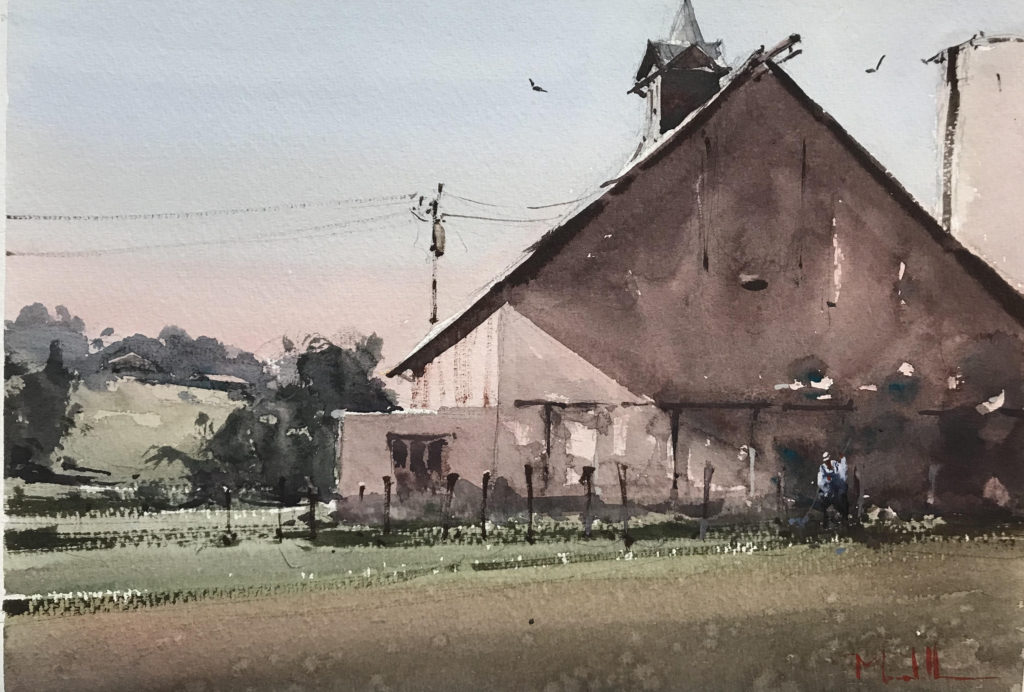
2. Afternoon Glow
This barn in Park City, Utah, appeared in full light when I came upon it. To enhance the brightness, I kept my darkest darks next to the lightest lights. I strengthened the shadows that were there and invented the diagonal shadow on the right to lead the viewer’s eye back into the composition.
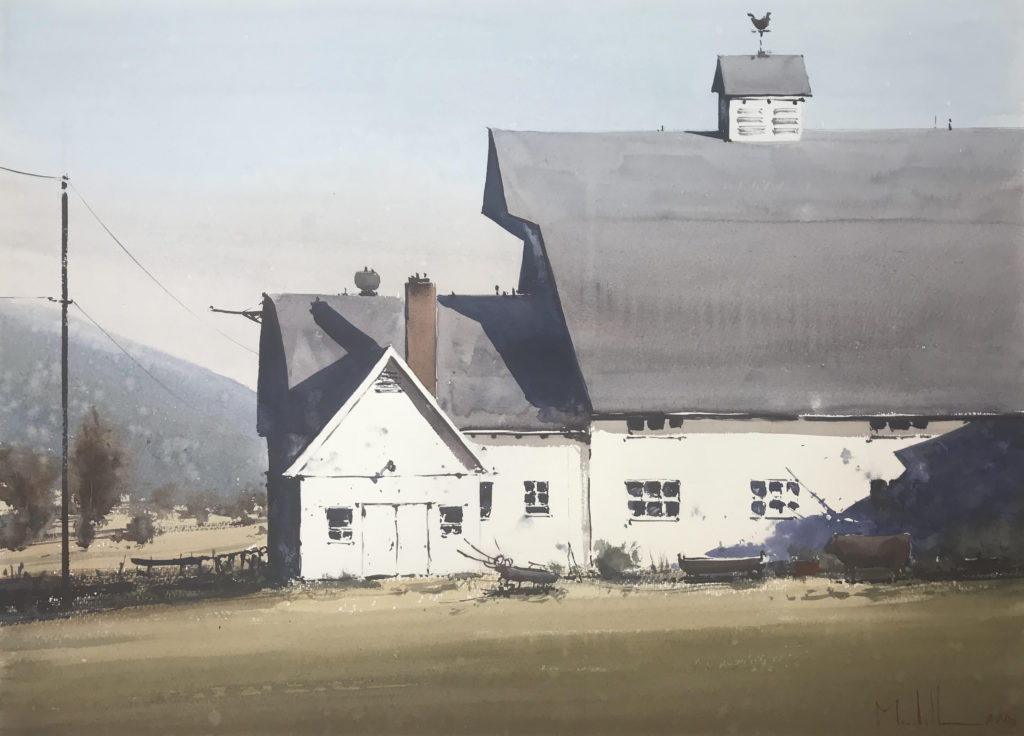
3. Sawmill Trail, Dusk
In reality, the diagonal path existed outside my field of view, but I needed a directional to lead the viewer’s eye into the painting. I moved the element into the composition as I worked in the field. Upon returning to the studio, I found that the piece lacked interest and needed a strong vertical to contrast with the rolling hill. I added the wintry trees, which also helped to enhance the feeling of dusk and push back the hills, creating greater depth.
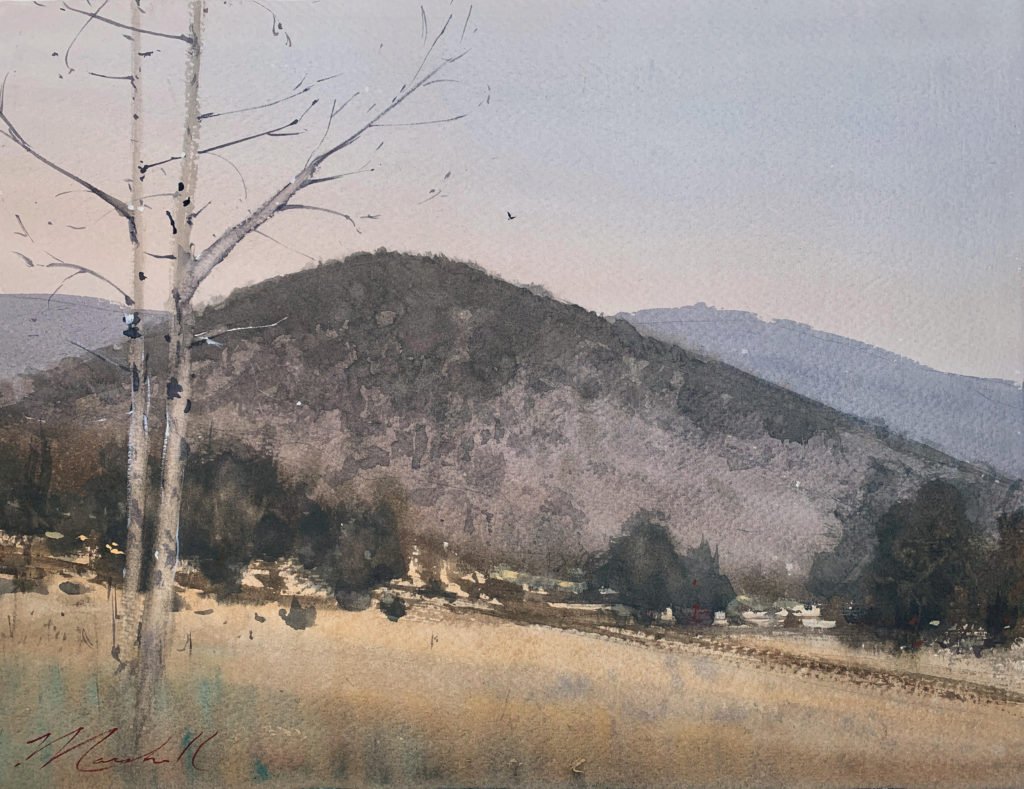
Dan shares more about his process in the PaintTube.TV workshop Cityscapes in Watercolor. You’ll learn these techniques and more:
- Complete a start-to-finish watercolor painting
- Composition lessons to establish a strong center of interest
- How to paint people in motion
- How to paint reflections, buildings, trees, cloudy skies
- Tips to achieve accurate perspective
- Brushwork for painting wet-into-wet, drybrush, calligraphy
- Edge control — when it’s best to use soft or hard edges
- Understand how values say it all!

